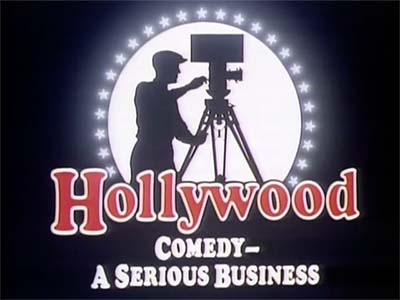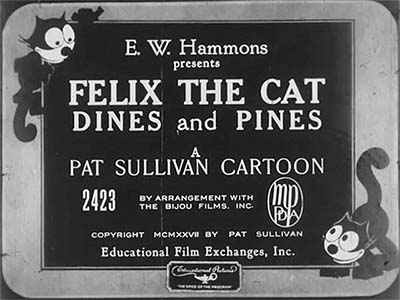
As a special thank you to our annual General and Student members, we have created a special page where we will archive past Reference Packs. There will be at least three reruns of complete RefPacks per year.
If you are currently on a quarterly membership plan, consider upgrading to an annual membership to get access to our bonus page with even more downloads. If you still have time on you quarterly membership when you upgrade to an annual membership, email us at…
membership@animationresources.org
…and we will credit your membership with the additional time.
Available to Student and General Members
PDF E-BOOK:

Die Muskete![]()
Volume 10 Nos. 236-252 (April-July 1910)

![]() The center of the arts at the beginning of the 20th century was Vienna, Austria, so it is natural that a great humorous arts magazine would come from that city– Die Muskete (The Rifle). The principles behind Die Muskete were initially quite different than either Jugend or Simplicissimus, its principle competitors from Berlin. Die Muskete was a humorous “men’s magazine” aimed at military officers and veterans. It still made fun of bureaucratic excesses, military inefficiency, social mores, the battle of the sexes, and religion, as well as political corruption, while remaining steadfastly loyal to the Emperor of Austria.
The center of the arts at the beginning of the 20th century was Vienna, Austria, so it is natural that a great humorous arts magazine would come from that city– Die Muskete (The Rifle). The principles behind Die Muskete were initially quite different than either Jugend or Simplicissimus, its principle competitors from Berlin. Die Muskete was a humorous “men’s magazine” aimed at military officers and veterans. It still made fun of bureaucratic excesses, military inefficiency, social mores, the battle of the sexes, and religion, as well as political corruption, while remaining steadfastly loyal to the Emperor of Austria.
The staff consisted entirely of local artists like Fritz Schönpflug, Karl Wilke and Franz Wacik. Each one brought something different to the table. Schönpflug specialized in military caricature, gently poking fun at the men who made up a large part of Die Muskete’s subscriber base, Wilke excelled at drawing pretty girls with a nouveau flair. And Wacik specialized in a wide range of fantastic subjects- strange creatures and fairy tale settings. Working along side them were the political cartoonist Josef Danilowatz, fashion artist Heinrich Krenes, and the brilliant caricaturist Carl Josef. These artists were well matched as a team to provide a variety of images and stylistic approaches. During World War I the focus of Die Muskete shifted from being a humor magazine to being a magazine for soldiers in the trenches. The tone became more political and the focus shifted to demonizing the enemy. But the level of artistry remained at a high level until many of the original team of artists began to leave the magazine in the mid 1920s.
It’s important to remember that in the heyday of caricature journals like Die Muskete, the artists didn’t identify strictly as cartoonists. For instance Franz Wacik was a designer for the theater, he painted frescos and murals, and he illustrated children’s books. Most of the cartoonists at Die Muskete were fine artists as well as being cartoonists, and this is typical of their contemporaries at other caricature journals as well. Thanks to JoJo Baptista for sharing his collection of these rare magazines with us.
Click to access the…
Download expires after June 2022
DVD QUALITY VIDEO:![]()

Hollywood: Comedy- A Serious Business![]()
(Thames TV/1980)
The animators of the golden age all expressed a debt of gratitude to the silent comedy film makers who paved the way for the cartoonists that followed their lead. At Disney, Don Graham led action analysis classes for the staff breaking down the pantomime of Chaplin, Keaton and Lloyd. Chuck Jones once expressed regret that he was born too late to work alongside the great slapstick comedy directors. The writing techniques at almost all of the animated cartoon studios of the 30s and 40s were derived from principles developed at Mack Sennett and Hal Roach’s studios. These films may seem ancient to us today, but they are far from irrelevant.
At the time this documentary was made, silent films were long gone from public view. In fact, if they were presented at all, they utilized beat up incomplete prints projected at the wrong frame rate. For the Hollywood series, film historian Kevin Brownlow assembled the best prints, transferred them on a state of the art variable speed telecine rank, and interviewed surviving cast and crew members to create the definitive documentary series on this seminal era in the history of movies. This episode deals with the comics- Chaplin, Keaton and Lloyd and explains how they created their films. Unseen since the VHS era, Animation Resources acquired a transfer of this important documentary from a rare set of laserdiscs, and now we share it with you.
Recently, blu-rays and DVDs have breathed new life into these important films. If you are unfamiliar with the movies discussed in this documentary, jot down the titles and look them up. You’ll find a lot to study and learn from silent films.
Click to access the…
Download expires after June 2022
DVD QUALITY VIDEO:![]()

Two Silent Felix The Cat Shorts![]()
“Felix Dines And Pines” (1927) “Feline Follies” (1919)
Felix the Cat was the most famous cartoon character of the silent era, and his popularity remains strong to this day. Messmer related the details of Felix’s creation in 1919 to animation historian John Canemaker like this…
Sullivan’s studio was very busy, and Paramount, they were falling behind their schedule and they needed one extra to fill in. And Sullivan, being very busy, said, “If you want to do it on the side, you can do any little thing to satisfy them.” So I figured a cat would be about the simplest. Make him all black, you know—you wouldn’t need to worry about outlines. And one gag after the other, you know? Cute. And they all got laughs. So Paramount liked it so they ordered a series.
Feline Follies was the first Felix the Cat cartoon. Originally named Thomas, the cat was eventually renamed Felix on the suggestion of a Paramount executive because the name suggested the words “felis”, the Latin word for cat and “felix” meaning “lucky”. By the time Felix Dines And Pines was produced in 1927, Felix’s star was on the wane. But the cartoons remained innovative, incorporating wild surrealism and sophisticated personality animation to tell its stories.
Animation Resources Advisory Board Member, Steve Stanchfield has done considerable research on Felix the Cat’s filmography and he shares these rare transfers from 35mm original prints with us. Even though the nitrate is deteriorating, they give a clear indication of why Felix is still the World’s Most Famous Cat.
Click to access the…
Download expires after June 2022
Haven’t Joined Yet?
Check out this SAMPLE REFERENCE PACK! It will give you a taste of what Animation Resources members get to download every other month!

Animation Resources is a 501(c)(3) non-profit arts organization dedicated to providing self study material to the worldwide animation community. If you are a creative person working in animation, cartooning or illustration, you owe it to yourself to be a member of Animation Resources.
JOIN TODAY To Access Members Only Content
![]()
![]() Animation Resources depends on your contributions to support its projects. Even if you can’t afford to join our group right now, please click the button below to donate whatever you can afford using PayPal.
Animation Resources depends on your contributions to support its projects. Even if you can’t afford to join our group right now, please click the button below to donate whatever you can afford using PayPal.






























